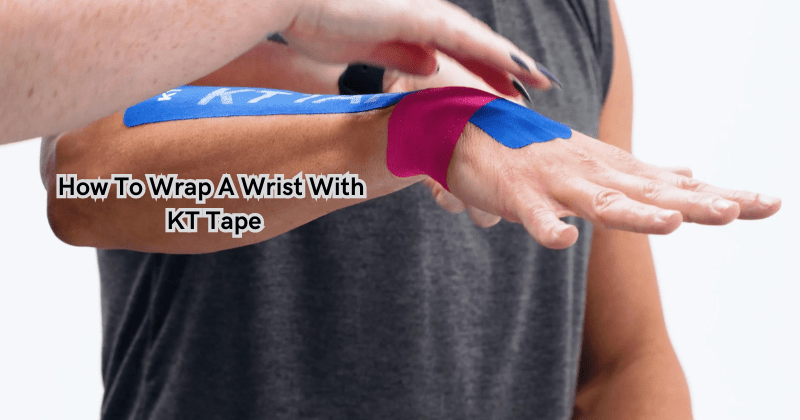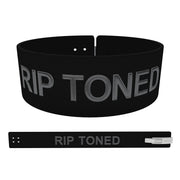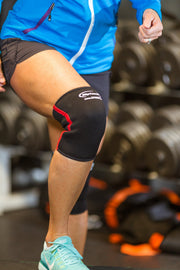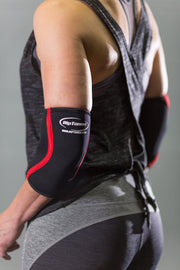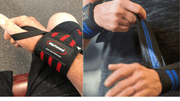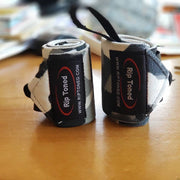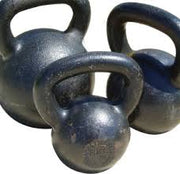KT tape is a popular brand of kinesiology tape that is commonly used by athletes and fitness enthusiasts for joint support, pain relief, and muscle recovery. KT Tape can be applied to various parts of the body, including the wrist, to provide stability and alleviate discomfort during physical activity. In this guide, we will discuss how to properly wrap a wrist with KT tape for optimal results.
We will cover the materials needed, step-by-step instructions for application, and tips for maximum effectiveness. Whether recovering from an injury or looking to prevent one, learning how to wrap your wrist with KT tape can be a game-changer in your fitness routine.
Materials Needed
Before we dive into the application process, it is important to have all the necessary materials on hand. Here are the items you will need:
- KT Tape: As mentioned before, KT tape is a brand of kinesiology tape that is specifically designed for physical activity. You can purchase it at most drugstores or online.
- Scissors: These will be used to cut the tape to the desired length and shape.
- Skin cleanser: Before applying KT tape, it is crucial to clean and dry the area where it will be placed. This ensures better adhesion and prevents irritation.
- Towel or cloth: You will need this to pat dry your skin after cleaning it.
- Razor (optional): If you have hairy wrists, it may be helpful to shave the area before application to ensure better adhesion.
- Pre-cut strips or roll of KT tape: Pre-cut strips come in various lengths and precut shapes for specific body parts, while a roll can be cut to your desired size. Choose whichever option works best for you.
Having all these materials ready will make the application process smoother and more efficient. Now, let's move on to the step-by-step instructions for wrapping a wrist with KT tape.
Step-by-Step Instructions
There are a few different methods for wrapping a wrist with KT tape, but we will cover the most common one. Follow these steps to ensure proper application:
- Start by cleaning and drying your wrist thoroughly: As mentioned before, make sure your skin is free from any lotions, oils, or sweat before applying the tape. Also, make sure to dry the area well.
- Cut a strip of KT tape: Measure and cut a strip of KT tape that is long enough to wrap around your wrist once with a little extra length for overlap. The width should be about 2-3 inches, depending on the size of your wrist and the support needed.
- Round off the corners: To prevent the tape from peeling off prematurely, round off the corners of the strip.
- Apply the tape just below your wrist joint: Place one end just below your wrist joint on the palm side of your hand. Leave a small amount of space between the start of the tape and your wrist crease.
- Wrap the tape around your wrist: Slowly wrap the tape around your wrist, making sure to stretch it slightly as you go. This will create tension and provide support.
- Overlap at least half of the previous layer: As you continue wrapping, overlap at least half of the previous layer with each new layer. This ensures better support and prevents the tape from slipping.
- Finish by wrapping the last layer around your wrist joint: Once you reach the top of your wrist, wrap the remaining tape around your wrist joint for extra support.
- Rub over the tape to activate adhesive: Use your fingers or a towel to rub firmly over the tape to activate the adhesive and ensure proper adhesion.
Congratulations! You have successfully wrapped your wrist with KT tape!
Can I Wear KT Tape All Day?
One of the most common questions people have about KT tape is whether they can wear it all day. The short answer is yes, you can wear KT tape for extended periods, even several days. However, there are a few things to keep in mind:
- Remove tape if it becomes uncomfortable: While wearing KT tape for an entire day may be fine for some, others may experience discomfort or irritation. If this happens, it is best to remove the tape and give your skin a break.
- Replace tape every 3-5 days: The adhesive on KT tape can start to lose effectiveness after a few days of wear. It is recommended that the tape be replaced every 3-5 days for optimal results.
- Avoid getting the tape wet: KT tape is not waterproof, so it is best to avoid getting it wet. If you do get it wet, pat dry with a towel and use your fingers to rub over the tape again to reactivate the adhesive.
- Take breaks in between applications: While KT tape can provide support and relief, it should not be used as a substitute for proper rest and recovery. Make sure to give your wrist breaks in between applications to allow it to heal properly.
KT tape is a great tool for supporting and protecting your wrists during physical activity. With the right materials and application, you can reap all its benefits while avoiding discomfort or irritation.
Why Use KT Tape for Wrist Support?
Now that you know how to properly wrap your wrist with KT tape, you may be wondering why it is beneficial to use this method over other forms of support. Here are some reasons why:
- Provides targeted support: Unlike traditional braces or compression sleeves, which provide general support to an entire area, KT tape can be applied directly to the specific muscles, tendons, or ligaments that need support.
- Does not restrict movement: With KT tape, you can still have a full range of motion in your wrist while receiving support. This is especially beneficial for activities that require wrist mobility, such as yoga or weightlifting.
- Promotes blood flow and healing: The tape's stretching and lifting action can help improve blood flow to the affected area, promoting healing and reducing swelling.
- Lightweight and comfortable: KT tape is thin, lightweight, and breathable, making it comfortable to wear for extended periods. It also does not restrict circulation or cause discomfort like some other forms of support.
- Long-lasting and cost-effective: As mentioned earlier, KT tape can be worn for several days before needing to be replaced. This makes it a cost-effective option compared to other forms of support that may need to be regularly replaced.
By using KT tape for wrist support, you can continue to participate in physical activities while also providing targeted and comfortable support to your wrists.
Does KT Tape Work for Wrist Support?
With any form of support or treatment, it is natural to wonder if it works. The good news is that there is evidence to suggest that KT tape can be effective for wrist support.
A study published in the International Journal of Sports Physical Therapy found that participants who wore KT tape on their wrists during weightlifting exercises reported less discomfort and had better grip strength compared to those who did not wear the tape. Another study published in the Journal of Hand Therapy also found that KT tape can improve wrist extension and flexion, as well as reduce pain levels in individuals with carpal tunnel syndrome.
While more research is needed on the effectiveness of KT tape for wrist support, these studies show promising results. Ultimately, the best way to determine if KT tape works for you is to give it a try and see how your wrist feels during and after activities. If you experience less discomfort and improved movement, KT tape may be a suitable form of support for your wrists.
Should I Consult a Professional Before Using KT Tape for Wrist Support?
If you have a pre-existing wrist injury or condition, it is always best to consult with a healthcare professional before using any form of support, including KT tape. They can assess your injury and give you personalized advice on whether KT tape is appropriate for your specific situation.
Additionally, if you are unsure how to properly apply KT tape or have any concerns, a physical therapist or athletic trainer can assist you in learning the correct technique. They can also provide guidance on how long and how often you should wear the tape for optimal support.
Moreover, if wearing KT tape does not alleviate your wrist pain or discomfort, it is important to seek professional medical advice. There may be underlying issues causing your symptoms that need to be addressed.
Plus, professional guidance and supervision can help prevent improper application of KT tape, which could potentially do more harm than good.
Mistakes to Avoid When Using KT Tape for Wrist Support
While KT tape can be a beneficial form of support for your wrists, there are some common mistakes to avoid when using it:
- Not properly cleaning and prepping the skin: Before applying the tape, clean and dry your wrist thoroughly. Any dirt or oils on the skin can affect the tape's adhesion and cause it to come off prematurely.
- Wrapping too tightly: KT tape should be applied with a stretch, but not so tight that it restricts circulation or causes discomfort. If you start to feel numbness or tingling in your hand, remove the tape immediately.
- Not removing hair on the wrist: Hair can also affect adhesion, so shave or trim any hair on your wrist before applying KT tape.
- Applying the tape over open wounds or blisters: It is crucial to avoid applying KT tape over any open wounds or blisters. This can cause further irritation and potentially lead to infection.
By avoiding these mistakes, you can ensure you are getting the most out of your KT tape for wrist support. Remember to also listen to your body and give your wrists proper rest and recovery when needed. With the right application and care, KT tape can be a game-changer for supporting your wrists during physical activity.
Can KT Tape Be Used for Other Wrist Injuries?
There are various wrist injuries and conditions that KT tape can potentially help with. First and foremost, it is essential to consult with a healthcare professional before using KT tape for any injury. They can advise you on whether KT tape is suitable for your specific injury and how to properly use it.
Some other wrist injuries and conditions that may benefit from KT tape include:
- Carpal Tunnel Syndrome: As mentioned earlier, research has shown that KT tape can help improve wrist extension flexion and reduce pain levels in individuals with carpal tunnel syndrome.
- Tendinitis: KT tape's lifting action can help alleviate pressure on the tendons and provide support for healing in cases of tendinitis.
- Sprains or strains: For mild sprains or strains, KT tape can offer targeted support to the affected area and promote healing.
Ultimately, whether or not KT tape can be used for a specific wrist injury depends on the individual's unique situation. Consulting with a healthcare professional is always recommended before using any form of support. They can provide personalized advice and ensure that KT tape is used correctly to maximize its benefits for your recovery.
FAQs
How can kinesiology taping help relieve pain from wrist sprains?
Kinesiology taping, when applied correctly, can significantly relieve pain from wrist sprains. The tape lifts the skin to reduce pressure on the underlying tissues, which can decrease inflammation and discomfort. Supporting the wrist in a stable position aids in the healing process while still allowing for some degree of movement, ensuring that the area does not become stiff from lack of use.
What is the correct way to apply kinesiology tape for a wrist sprain to ensure it supports the median nerve?
To support the median nerve effectively, start by placing the wrist in an extended position to stretch the area slightly. Apply the KT tape starting from the back of the hand, moving towards the forearm, making sure it covers the wrist area without limiting movement excessively. The tape should pass over the wrist and under the index finger, as this method helps in stabilizing the median nerve, providing relief and aiding in the healing process.
Can KT tape application limit movement for a wrist sprain, and is that beneficial?
Yes, a KT tape application can limit movement to a certain extent, and this is beneficial for wrist sprains. By restricting excessive and potentially harmful movements, the tape ensures the wrist is kept in a safer, slightly extended position. This limitation helps prevent further injury and supports the wrist as it heals, yet it still allows enough movement to keep the joint from becoming stiff.
How does KT tape contribute to the healing process of wrist sprains?
KT tape contributes to the healing process of wrist sprains by stabilizing the affected area, which helps in reducing strain on the injured tissues. The slight lifting of the skin improves blood circulation and lymphatic drainage, promoting faster healing. Additionally, the support and pain relief provided by the tape can make it easier for individuals to participate in rehabilitative exercises, further aiding the recovery process.
Conclusion
In conclusion, KT tape can be a useful form of support for your wrists during physical activities. Studies have shown promising results for its effectiveness and it is worth trying if you experience wrist discomfort or pain. However, it is crucial to consult with a healthcare professional before using KT tape and to avoid common mistakes such as wrapping too tightly or applying over open wounds.
By properly using and caring for KT tape, it can potentially help alleviate symptoms of various wrist injuries and conditions. Remember to always listen to your body and seek medical advice for proper treatment and recovery.
So, next time you're gearing up for a workout or sports game, consider giving KT tape a try for extra support and comfort in your wrists.

Click Here to Learn More About the Rip Toned Wrist Wraps and find wrist pain relief

